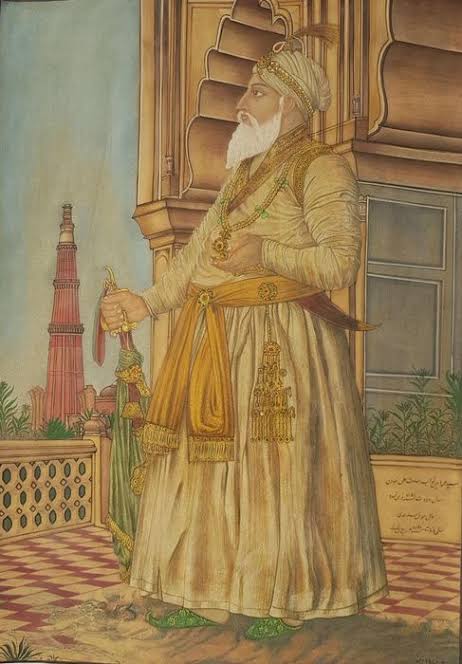
It is a Western phenomenon to consider gender as anything but binary. This practice travelled far and wide with the Industrial Revolution, painting the world in pinks and blues. Classifying clothes based on gender, however, started even earlier than that. Clothing’s most obvious aim is to provide the user with warmth and security, but it also performs a variety of social and cultural functions.
Clothes for both men and women are classified culturally and by what roles they play in society. The definition of becoming a man or woman is connected to societal norms and perceptions and is closely linked to appearance meaning clothing. The ever-evolving apparel industry may be a clear reflection of the changing patterns within the social, political, technological and economic environment of a society. The past few decades have seen significant and diverse changes in consumer habits and lifestyles.
In every culture, the birth of a man or a woman is not just a biological fact. Social implications are incorporated within it. At present, the word gender is commonly used to refer to all ways in which what starts as a fact of nature is reformed by a society. In all cultures, convictions on what “men” and “women” are or should be, have arisen, although the views are different across generations and cultures. Any of idea of fluidity would screech to a halt, at the doors of the Western mindset. For instance, in India, in all kinds of Bhakti traditions, male disciples would effeminize themselves to worship Krishna or Shiva. In the court of Awadh, the Nawabs would dress themselves up as women, on the saint’s days of their Pirs, to simulate women in labour and giving birth to the descendants of the Pir. So all these were very “mainstream” activities, by mainstream I don’t necessarily mean the norm, but I mean something that doesn’t necessarily excite hatred or criminalisation by the law. This notion of living with indifference to difference seems to have been the case for thousands of years in the Indian subcontinent. However, that all changed with coming the of the British. They were shocked that the rulers of Awadh should be men who would dress up as women. They were horrified that there were flourishing public traditions of hijras, khwajasarais and aravanis. And so they passed a whole bunch of laws, they passed the Criminal Tribes Act in 1871 to criminalise hijras. They passed so-called Hindu and Muslim personal laws to tell them what they could or could not do sexually. They started a system of education in which Indians were gradually filled with revulsion for our own century-old traditions. So, colonialism was responsible for a lot, but I do want to add that they were very much acting in concert with certain traditions that were responsible for the modern idea of gender roles.

Women, for instance, are supposed to be more concerned and vigilant about their appearance in clothing and fashion, but men should be less interested in these items. It is often believed that women are timid and men are more violent. The characteristics and qualities we associate with each gender are also reflected through the gender-specific garments. That is why clothing made for women is more figure accentuating and not suitable for field work while men’s clothing is made with functionality in mind and with long-lasting materials. As dress can be used as a communication tool to communicate information such as one’s gender or status, it can carry some stereotypes according to the culture, religion or society. However, before 1649 – Puritan influences on dressing after King Charles I was dead, had no significant differences between sexes in their way of dressing. Both sexes would wear decorated costumes. One’s class was determined by the colours and shapes of their gowns, not one’s gender. The aristocrats and bourgeois superiors used to show the abundant lace, rich velvets, silks, decorated shoes, elaborate hats, wigs and plenty of perfume (Davis, 1992). A pink silk suit, trimmed in gold and silver, was seen to be completely masculine. The clothing was the social class’s definition, and the more elaborate the dresses were, the higher the class. It all started to change when the aristocrats decided that they wanted distinction between garments to distinguish themselves from the middle class. As Flügel described in 1930, it is male abandonment, the most significant occurrence in the history of dressing in which men decided they no longer are interested in “beautiful” appearances and just want it to be beneficial. It would not be incorrect to claim that the idea of “wearing just like a man” and “wearing just like a woman” was a significant time embraced by society. In short, fashion trends immensely help the social construction of gender. The very existence of a norm for beauty judgment automatically means that one party is in charge of the other. That is, people are constantly judging each other to make sure they fit into the correct classification of gender.
The stereotypical perception of gender has divided the population in two distinct species. If men are not as masculine as society wants them to be, then they are looked down upon. It is also contradictory how women are expected to be girly, but they are shamed for being girly. The tendency to make fun of younger girls on the internet for being ‘too feminine’ points to a larger issue, the fact that women particularly teenage girls, do not hold any cultural capital in our society. Gender stereotypes have now crossed the threshold of our minds and have infiltrated the physical world through media. Basically the idea is that those things that generally men like or what they are conditioned to like, like sports, action movies or movies revolving around male heroes are considered “good taste”, and are considered cool things to like. Whereas entertainment made for women consists of rom-coms, girly pop music, and even fashion and makeup are considered superficial and non-intelligent.
At last, garment purchase has been reaching adulthood, with both male and female consumers becoming increasingly brand and fashion-conscious. With the emergence of an up-to-date social organization, garment purchase is no any longer the forte of girls alone. The norm of traditional clothing has stressed the roles of men and women played since ancient times. Males need to demonstrate rigidity, mental stability and strength of masculine beauty; while females should be equipped with ladylike, kind and soft physical perfection. Neutral clothing has been the most common costume since the end of the 1990s. And now modern minds are opening to cross-dressing, finally breaking the shackles of binary pinks and blues.
For further enquiries contact us






